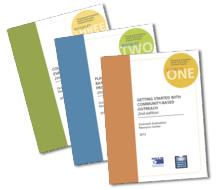May
27

Posted by nnlmneo on May 27th, 2016
Posted in: Blog
You may already know that the NEO offers some booklets that work through some basic evaluation processes, called Planning and Evaluating Health Information Outreach Projects. You can view them as a PDF, an HTML or you can order a print version (there are limited copies of these left, so no promises). But I think the under-marketed gem in these booklets are the checklists and worksheets at the end of each one. And the ones in the HTML version of the Booklets are Word docs that you can download, modify if you want, and use.

For example, let’s say you’d like to create a survey to find out if you’ve reached your project’s outcomes. A process for this is explained in Booklet 3: Collecting and Analyzing Evaluation Data. At the end of this booklet is a blank worksheet called “Planning a Survey” that you can download and use to work through writing your survey questions. Along with that, there’s also an example of a filled out worksheet based on a realistic scenario that helps demonstrate how the worksheet can be used.
The importance of checklists in improving outcomes is underscored in Dr. Atul Gawande’s book The Checklist Manifesto. While he’s mostly talking about medical scenarios, the same can be true with evaluation. Let’s face it, even if you feel fairly confident in evaluation, there are a lot of little things to remember, especially if you don’t do it all the time.
In Booklet 1: Getting Started with Community-Based Outreach, the checklist items are sorted into the three categories “Step 1 – Get Organized,” “Step 2 – Gather Information,” and “Step 3 – Assemble, Interpret and Act.” These are the same categories as the chapters in the book. So for example, one of the items under “Get Organized” is “Gather primary data to complete the picture of your target community.” If you’d like a reminder or some suggestions of how to go about this, go to the chapter heading “Step 2 – Gather Information” where you can find a list of ways to gather primary data. These checklists can also be downloaded as a Word document and adapted to your own needs.
I hope this isn’t too meta, but while you’re using evaluation to help you reach your project’s outcomes, you also have a personal outcome of doing a good job with your evaluation plan! So when you head into your evaluation projects, don’t forget your checklists to make sure all of your evaluation outcomes are successful.